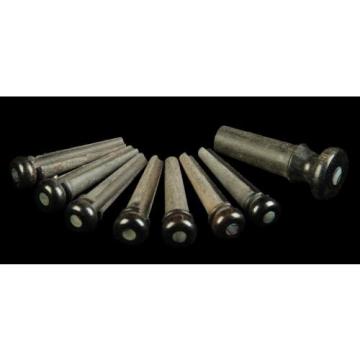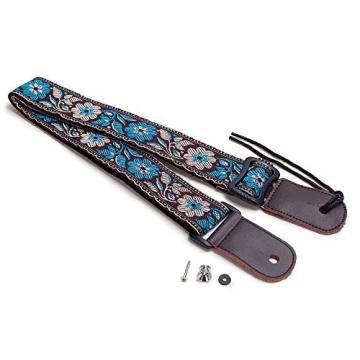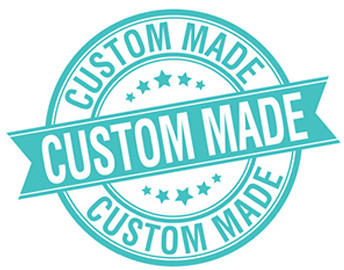Home> Company News> From Kit to Stage: How to Build and Customize Your Martin Guitar Kit
- AddressShan Dong Province,China
- Factory AddressShan Dong Province,China
- Phone(Working Time)86-13305315989
- Phone(Nonworking Time)86-13305315989
From Kit to Stage: How to Build and Customize Your Martin Guitar Kit
2023-05-08 13:22:24For those who are passionate about guitars, building and customizing your own instrument can be a rewarding and fulfilling experience. One such option for those who are interested in guitar building is the Martin Guitar Kit. This kit offers a unique opportunity to build your own Martin guitar from scratch, with all the components and materials provided in the package.
Building your own guitar offers a level of customization and personalization that is unmatched by purchasing a pre-made guitar. The Martin Guitar Kit provides an affordable and accessible way for guitar enthusiasts to build their own high-quality instrument, while also gaining valuable knowledge about guitar construction and design.
In this article, we will provide an overview of the Martin Guitar Kit, the benefits of building and customizing your own guitar, the components included in the kit, the tools and equipment needed for building, step-by-step instructions for assembly, finishing and customization, troubleshooting common issues, frequently asked questions, and resources for further learning and support.

Components of the Martin Guitar Kit
The Martin Guitar Kit is a comprehensive package that includes all the components required to build a high-quality guitar. Each kit comes with a set of instructions, detailing the assembly process and the function of each component.
The kit includes all the major components required to build a guitar, such as the top, back, and sides, neck, and fretboard. These components are made of high-quality tonewoods such as Sitka spruce, Indian rosewood, and mahogany, ensuring excellent sound quality and durability.
The kit also includes smaller components such as the bridge, nut, saddle, and tuners, which are essential for proper sound production and tuning. These components are made of high-quality materials, such as bone or synthetic materials, ensuring reliable performance and longevity.
When selecting a Martin Guitar Kit, it is important to consider your skill level and preferences. Some kits are designed for experienced builders, while others are more suitable for beginners. It is also essential to ensure that all components are of the highest quality to ensure the best possible sound and durability.
Overall, the Martin Guitar Kit is an excellent option for anyone looking to build their own high-quality guitar. With its comprehensive range of components and detailed instructions, it provides an excellent opportunity for guitar enthusiasts to learn about guitar building and customization.
Tools and Equipment Required for Building the Martin Guitar Kit
Building a guitar kit requires a variety of tools and equipment that are necessary for the assembly and customization process. Here are some of the most essential tools and equipment you'll need to successfully build a Martin Guitar Kit:
-
Workbench: A sturdy workbench is necessary for securely holding the guitar body and neck while you work on them.
-
Clamps: Clamps are necessary for securing the parts of the guitar together while glue dries. They come in various sizes and shapes, so make sure to choose the ones that will work best for your particular guitar kit.
-
Nut and Saddle Files: These are specially designed files that are used to shape the nut and saddle. They are necessary for creating a clean and precise cut.
-
Fretting Tools: Fretting tools are used to press the frets into the fretboard. They include a fret hammer, a fret saw, and a fretting press.
-
Measuring Tools: Measuring tools are essential for ensuring that your guitar is built to the proper specifications. These include a ruler, calipers, and a straight edge.
-
Drill and Drill Bits: You'll need a drill for drilling holes for the tuning machines, bridge pins, and other components.
-
Sandpaper and Sanding Tools: Sandpaper and sanding tools are necessary for shaping and smoothing the guitar's body and neck.
-
Glue and Adhesives: You'll need a variety of glues and adhesives for attaching various parts of the guitar together. These include wood glue, superglue, and epoxy.
-
Finishing Supplies: Finishing supplies, such as lacquer, stain, and clear coat, are necessary for protecting and beautifying your guitar.
-
Safety Equipment: Building a guitar kit involves using power tools and sharp instruments, so it's important to wear safety glasses, gloves, and ear protection to protect yourself from injury.
When selecting tools and equipment, it's important to choose high-quality products that will last for years to come. Additionally, investing in quality tools and equipment can make the building process smoother and more enjoyable.

Step-by-Step Guide to Building Your Martin Guitar Kit
Building your own guitar can be a daunting task, but with careful attention to detail and following the instructions provided, it can be a rewarding and fulfilling experience. The Martin Guitar Kit comes with detailed instructions on how to assemble the components and build your guitar. Here is a step-by-step guide to building your Martin Guitar Kit:
-
Prepare your workspace: Make sure you have a clean and organized workspace to work on your guitar. Set up your workbench and tools, and ensure that you have enough space to move around.
-
Assemble the bracing: Begin by assembling the bracing for the top and back of the guitar. Follow the instructions carefully and use the provided clamps to hold the bracing in place.
-
Install the soundhole rosette: Carefully install the soundhole rosette into the top of the guitar. Make sure it is centered and flush with the surface of the top.
-
Glue the top and back onto the sides: Apply glue to the top and back of the guitar, and carefully align it with the sides. Use clamps to hold the pieces together, and wipe off any excess glue.
-
Install the neck: Carefully install the neck onto the body of the guitar. Make sure it is centered and aligned properly, and use clamps to hold it in place.
-
Install the fingerboard and frets: Install the fingerboard onto the neck, and carefully install the frets. Make sure they are level and flush with the surface of the fingerboard.
-
Install the bridge: Install the bridge onto the body of the guitar, and align it properly with the soundhole and the fretboard. Use clamps to hold it in place while the glue dries.
-
Install the tuning machines: Install the tuning machines onto the headstock of the guitar, and make sure they are aligned properly. Tighten the screws to secure them in place.
-
Install the nut and saddle: Install the nut onto the headstock of the guitar, and the saddle onto the bridge. Make sure they are aligned properly and secured in place.
-
Apply finish: Once the guitar is fully assembled, it's time to apply the finish. Follow the instructions provided with the kit to apply the finish properly.
-
Final adjustments: Once the finish has dried, make final adjustments to the guitar, such as adjusting the truss rod and setting the intonation.
By following these steps and taking your time with each step, you can build your own Martin Guitar Kit and have a one-of-a-kind guitar that you can be proud of. Remember to be patient and enjoy the process, and don't hesitate to seek help or advice if you encounter any difficulties.
Finishing and Customizing Your Martin Guitar Kit
After successfully assembling your Martin Guitar Kit, the next step is finishing and customizing it to your liking. This is where you can add your own personal touch to the guitar and make it truly unique. In this section, we will cover the steps to finish and customize your Martin Guitar Kit.
- Applying the Finish The first step in finishing your guitar is to apply a finish to protect the wood and give it a polished look. There are several finishes to choose from, including lacquer, shellac, and oil finishes. Each has its own benefits and drawbacks, so it's important to choose the one that works best for you.
To apply the finish, start by sanding the guitar body to smooth out any rough spots and remove any excess glue. Next, apply the finish using a brush, roller, or spray gun, depending on the type of finish you are using. Follow the manufacturer's instructions carefully and be sure to apply the finish in a well-ventilated area.
- Customizing Your Guitar Once you have applied the finish, it's time to add your own personal touch to the guitar. You can do this by adding unique designs or accessories. Here are some ideas to get you started:
- Adding a pickguard: A pickguard not only protects the guitar's finish, but it can also add a unique design element to the guitar.
- Customizing the hardware: You can switch out the knobs, tuners, and bridge pins to add a personalized touch to the guitar.
- Inlay work: Inlay work can add a unique design element to the guitar. You can choose from a variety of materials, including mother of pearl, abalone, and wood.
-
Maintenance After finishing and customizing your Martin Guitar Kit, it's important to properly maintain it. This includes keeping the guitar clean and storing it in a safe, dry place. You should also periodically check the guitar for any signs of damage or wear and tear.
-
Sourcing High-Quality Finishing Materials and Customization Supplies To ensure that your finished guitar looks and sounds its best, it's important to source high-quality finishing materials and customization supplies. You can find these at your local music store or online.
-
Importance of Proper Maintenance Proper maintenance of your finished guitar is crucial to keeping it in good condition. This includes cleaning the guitar regularly, storing it in a safe place, and periodically checking for any signs of damage or wear and tear.
Overall, finishing and customizing your Martin Guitar Kit is an exciting process that allows you to make the guitar truly your own. By following the steps outlined above, you can create a unique and beautiful guitar that you will cherish for years to come.
Troubleshooting Common Issues Encountered during Building and Customization
Even with the best tools, equipment, and instructions, it is possible to encounter issues during the building and customization process. Here are some common problems and their solutions:
-
Incorrect Measurements: One of the most common problems is inaccurate measurements, which can result in the guitar not fitting together properly. To avoid this issue, double-check your measurements before making any cuts, and take your time to ensure everything is properly aligned.
-
Fretboard Installation: Installing the fretboard can be a tricky process, and if not done correctly, it can cause the guitar to buzz. To avoid this, make sure the fretboard is properly aligned, and take care to sand down any high spots before installing it.
-
Finishing Issues: Applying a finish can be a challenging process, and issues can arise if not done properly. Common problems include runs, bubbles, and unevenness. To avoid these issues, take your time when applying the finish and ensure that the guitar is properly sanded and prepared beforehand.
-
String Height: Setting the string height or action can be tricky, and it can affect the playability of the guitar. If the action is too high, it can make the guitar difficult to play, while if it's too low, it can cause buzzing. To avoid these issues, take your time when setting the action, and ensure that it's properly adjusted before finishing the guitar.
-
Electrical Issues: If you're installing electronics in your guitar, it's important to be careful to avoid electrical issues. Common problems include faulty wiring, loose connections, and grounding issues. To avoid these issues, take your time when wiring the guitar, and ensure that all connections are properly secured and grounded.
-
Intonation Issues: Intonation is critical for ensuring that the guitar plays in tune, and it can be a challenge to get it right. Common problems include frets that are not properly spaced, or strings that are not properly seated in the bridge. To avoid these issues, take your time when setting the intonation, and ensure that the guitar is properly tuned and adjusted.
-
Structural Issues: In some cases, structural issues can arise during the building process, such as cracks or splits in the wood. To avoid these issues, make sure to use high-quality materials and take your time during the building process to ensure that everything is properly aligned and glued together.
If you encounter any of these issues, don't panic. Take your time, review your instructions, and consult with experienced builders if necessary. With patience and persistence, you can overcome any issue and build a high-quality Martin Guitar Kit that you'll be proud to play.

Frequently Asked Questions about Martin Guitar Kit Building and Customization
Building and customizing a Martin Guitar Kit can be an exciting and rewarding process, but it's also natural to have questions along the way. Here are some common questions about Martin Guitar Kit building and customization:
- Do I need to have prior experience to build a Martin Guitar Kit?
No, prior experience is not necessary, but it certainly helps. Martin Guitar Kits are designed for both beginners and experienced guitar builders, so you can choose a kit that suits your skill level. However, if you're a beginner, you may want to consider taking a class or seeking guidance from an experienced builder.
- How long does it take to build a Martin Guitar Kit?
The time it takes to build a Martin Guitar Kit depends on your skill level and how much time you have to devote to the project. For an experienced builder, the process can take a few weeks or months. For a beginner, it can take several months or longer.
- What tools do I need to build a Martin Guitar Kit?
Building a Martin Guitar Kit requires a variety of tools, including clamps, a saw, a drill, sandpaper, and more. The exact tools you need depend on the specific kit you choose. It's important to ensure that all tools are of high quality and in good condition before you begin.
- What kind of finishes can I use on my Martin Guitar Kit?
Martin Guitar Kits can be finished with a variety of finishes, including lacquer, shellac, and varnish. Each type of finish has its own unique characteristics and requires different application techniques.
- Can I customize my Martin Guitar Kit?
Yes, you can customize your Martin Guitar Kit to suit your preferences. You can choose different materials, add custom inlays or designs, and more. It's important to remember that customization can add time and complexity to the building process.
- What should I do if I encounter problems during the building process?
If you encounter problems during the building process, there are a few things you can do. First, consult the instructions provided with your kit to see if there are any tips or solutions. You can also seek guidance from online forums or experienced builders. If you're still struggling, consider seeking professional help.
- How do I maintain my finished Martin Guitar Kit?
To maintain your finished Martin Guitar Kit, it's important to keep it clean and protected from extreme temperatures and humidity. Regularly wiping down the guitar with a clean cloth and using a guitar cleaner can help keep it in top condition. It's also important to store the guitar in a case or stand when not in use.
By considering these frequently asked questions, you can gain a better understanding of the Martin Guitar Kit building and customization process and feel more confident in taking on the project.
Resources for Further Learning and Support
Building and customizing your own guitar can be an incredibly rewarding experience, but it's also a complex process that requires some skill and knowledge. If you're new to building guitars, you may have a lot of questions and may need some additional guidance and support to get started. Fortunately, there are many resources available online and offline that can help you learn more about building and customizing guitars and provide you with the support you need to build your own Martin Guitar Kit.
Online Forums and Communities
One of the best places to get support and guidance for building and customizing guitars is online forums and communities. There are many forums dedicated to guitar building, including some specifically focused on Martin guitars. These forums are a great place to ask questions, share your progress, and get feedback from other guitar builders and enthusiasts. Some popular guitar building forums include:
-
The Gear Page: This forum has a dedicated subforum for guitar building and modification, where you can find discussions on a wide range of topics related to building and customizing guitars.
-
The My Les Paul Forum: This forum is dedicated to Les Paul guitars, but it also has a subforum specifically for guitar building and customization.
-
The Acoustic Guitar Forum: This forum is dedicated to acoustic guitars, and it has a subforum for guitar building and repair.
Online Tutorials and Videos
Another great way to learn more about building and customizing guitars is through online tutorials and videos. There are many tutorials and videos available for free online that can help you learn more about the process of building a guitar, from selecting the right materials to finishing your guitar. Some popular guitar building channels on YouTube include:
-
Crimson Guitars: This channel features a wide range of tutorials on guitar building and customization, including tutorials on finishing, wiring, and fretting.
-
StewMac: This channel features a range of tutorials on guitar building, repair, and maintenance.
-
The Luthier's Corner: This channel features tutorials on guitar building and repair, as well as interviews with professional guitar builders.
Books and Print Resources
If you prefer to learn from books and other print resources, there are many excellent resources available that can help you learn more about building and customizing guitars. Some popular books on guitar building include:
-
"Guitar Player Repair Guide" by Dan Erlewine: This book provides a comprehensive guide to guitar repair and maintenance, as well as tips on guitar building and customization.
-
"The Art of Lutherie" by Tom Bills: This book is a comprehensive guide to guitar building and includes detailed instructions on every step of the process.
-
"Make Your Own Electric Guitar" by Melvyn Hiscock: This book provides a step-by-step guide to building an electric guitar from scratch.
Local Workshops and Classes
If you prefer a more hands-on approach to learning about guitar building, you may want to consider taking a workshop or class in your local area. Many guitar shops and luthier schools offer classes and workshops on guitar building and repair, which can provide you with the hands-on experience and guidance you need to build your own guitar. Some popular guitar building workshops and schools include:
-
Roberto-Venn School of Luthiery: This school offers a comprehensive guitar building program that covers everything from guitar design to finishing.
-
The Center for Furniture Craftsmanship: This school offers a range of woodworking courses, including courses on guitar building and repair.
-
The International School of Lutherie: This school offers a range of courses on guitar building and repair, as well as courses on other stringed instruments.
Networking and Collaboration
Finally, one of the best ways to learn more about guitar building and get support and guidance is

Conclusion: The Joy of Building and Customizing Your Own Martin Guitar Kit
Building and customizing your own Martin Guitar Kit can be a fulfilling experience for guitar enthusiasts of all levels. In this guide, we've covered the basics of building your own Martin guitar kit and provided tips and resources to help you along the way. Building your own guitar allows you to fully customize and personalize your instrument, creating a one-of-a-kind piece that truly reflects your personality and style.
We encourage you to take the first step in building your own Martin Guitar Kit and to enjoy the process of creating something truly unique. The journey may have its challenges, but the end result will be well worth the effort. Keep in mind the importance of safety, patience, and attention to detail as you embark on this exciting adventure. We hope this guide has been helpful and wish you the best of luck in your guitar building and customization endeavors!
 Martin martin guitar strings Acoustic martin d45 Guitar martin guitars Bridge/End martin acoustic guitars Pin martin strings acoustic Set Ebony with Paua Pearl Inlays
Martin martin guitar strings Acoustic martin d45 Guitar martin guitars Bridge/End martin acoustic guitars Pin martin strings acoustic Set Ebony with Paua Pearl Inlays Kind martin guitar accessories Letters guitar martin martin acoustic guitars martin acoustic guitar martin
Kind martin guitar accessories Letters guitar martin martin acoustic guitars martin acoustic guitar martin CLOUDMUSIC martin guitar case Colorful acoustic guitar strings martin Hawaiian martin strings acoustic Style martin acoustic guitar strings Cotton martin guitar accessories Ukulele Strap Blue White Flower (Brown)
CLOUDMUSIC martin guitar case Colorful acoustic guitar strings martin Hawaiian martin strings acoustic Style martin acoustic guitar strings Cotton martin guitar accessories Ukulele Strap Blue White Flower (Brown) R martin guitars & guitar martin R martin guitar strings acoustic medium audio martin acoustic guitar strings CD martin guitar strings
R martin guitars & guitar martin R martin guitar strings acoustic medium audio martin acoustic guitar strings CD martin guitar strings pf1016-b martin guitar case Martin's martin strings acoustic Guitar martin d45 Lounge martin guitar accessories Beer acoustic guitar martin Bar Pub Room Neon Light Sign
pf1016-b martin guitar case Martin's martin strings acoustic Guitar martin d45 Lounge martin guitar accessories Beer acoustic guitar martin Bar Pub Room Neon Light Sign
